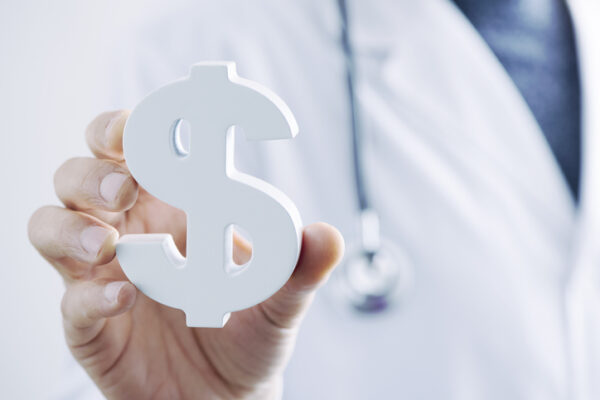
The first wave of Covid-19 may gave subsided in some areas of the country, but in others it is growing and hospitals everywhere are continuing to face significant challenges.
The American Hospital Association recently estimated that hospitals will incur at least $323.1 billion in losses through the end of this year due to Covid-19. Key contributors include postponed and canceled elective procedures, lower patient volumes across all departments, and higher costs for supplies and devices.
Other factors compound the financial challenges, including pressure for hospitals to implement new initiatives that foster a safer care environment for Covid-19 patients, non-Covid-19 patients, and healthcare providers. This pressure is mounting, as spikes in cases continue to appear in various regions, and as concerns grow about the flu season.
The good news is that improving patient, staff, and visitor safety can actually help hospitals recover from the financial losses they are experiencing due to the pandemic. For example, enhanced patient safety leads to:
- Fewer costly events, such as hospital-acquired infections or conditions, acute kidney injuries, adverse drug events, readmissions, and return visits to the emergency department.
- Faster and more proactive identification of cost-saving opportunities, such as IV to PO conversions and more optimal management of high-cost drugs.
- Higher patient volumes due to a stronger quality and safety reputation. A recent Deloitte survey, for example, found that one out of every two patients considers brand and reputation when selecting a hospital.
A Safer, More Profitable Hospital
While most hospitals use EHRs and data analytics tools to enhance care quality and patient safety, increasing numbers are turning to clinical surveillance to complement and expand on those initiatives. Clinical surveillance continuously pulls information from EHRs and other patient data sources, sorts and analyzes that data to identify potential safety problems and care improvement opportunities, and issues real-time alerts and notifications to relevant healthcare providers.

Health Benefit Consultants, Share Your Expert Insights in Our Survey
Erik Johnson Erik Johnson is the Chief Commercial Officer at VigiLanz. An accomplished global marketing software executive with a broad background including business development and digital transformation in health IT, he is dedicated to helping VigiLanz advance its goals of helping hospitals and health systems improve patient safety and care quality.
Hospital leaders report significant patient safety and margin-enhancing benefits from clinical surveillance. In a recent survey of 100 hospital leaders, nearly all (95%) said it improves patient safety and the vast majority (81%) said it leads to a high ROI.
The top safety benefits they identified include:
- Identifying and managing safety events
- Identifying medication errors
- Identifying opportunities to improve antibiotic use
- Ensuring safer opioid prescribing
Quantifying the Impact
A recent economic value assessment of clinical surveillance found that many hospitals could save millions of dollars by implementing clinical surveillance.
The assessment—which is based on metrics and reports from peer-reviewed studies, journals, government databases, and other sources—analyzes a hospital’s potential savings based on annual inpatient admissions, number of staffed beds, daily census, and other information.
Hospitals can input their information to receive a customized report. For example, a small hospital with 50 staffed beds, 3,100 annual admissions, an average daily census of 40, and a bed utilization rate of 44%, could experience $1,290,876 annually in savings.
That is driven by:
- $64,843 in cost savings (the reduction in costs to the hospital).
- $1,089,046 in cost avoidance (the value of safety-related events and errors that would be potentially avoided or reduced).
- $145,987 in returned resources (the value of time saved by transitioning from manual to automated processes).
Larger hospitals can save even bigger amounts.
The Urgent Imperative
Hospitals face significant financial challenges, but they must also act quickly to ensure patient, staff, and visitor safety. Luckily, improving margins and enhancing patient safety don’t need to be competing priorities. When hospitals implement effective safety improvement approaches, margin improvements naturally follow.
Photo: nito100, Getty Images
Erik Johnson is the Chief Commercial Officer at VigiLanz. An accomplished global marketing software executive with a broad background including business development and digital transformation in health IT, he is dedicated to helping VigiLanz advance its goals of helping hospitals and health systems improve patient safety and care quality.














